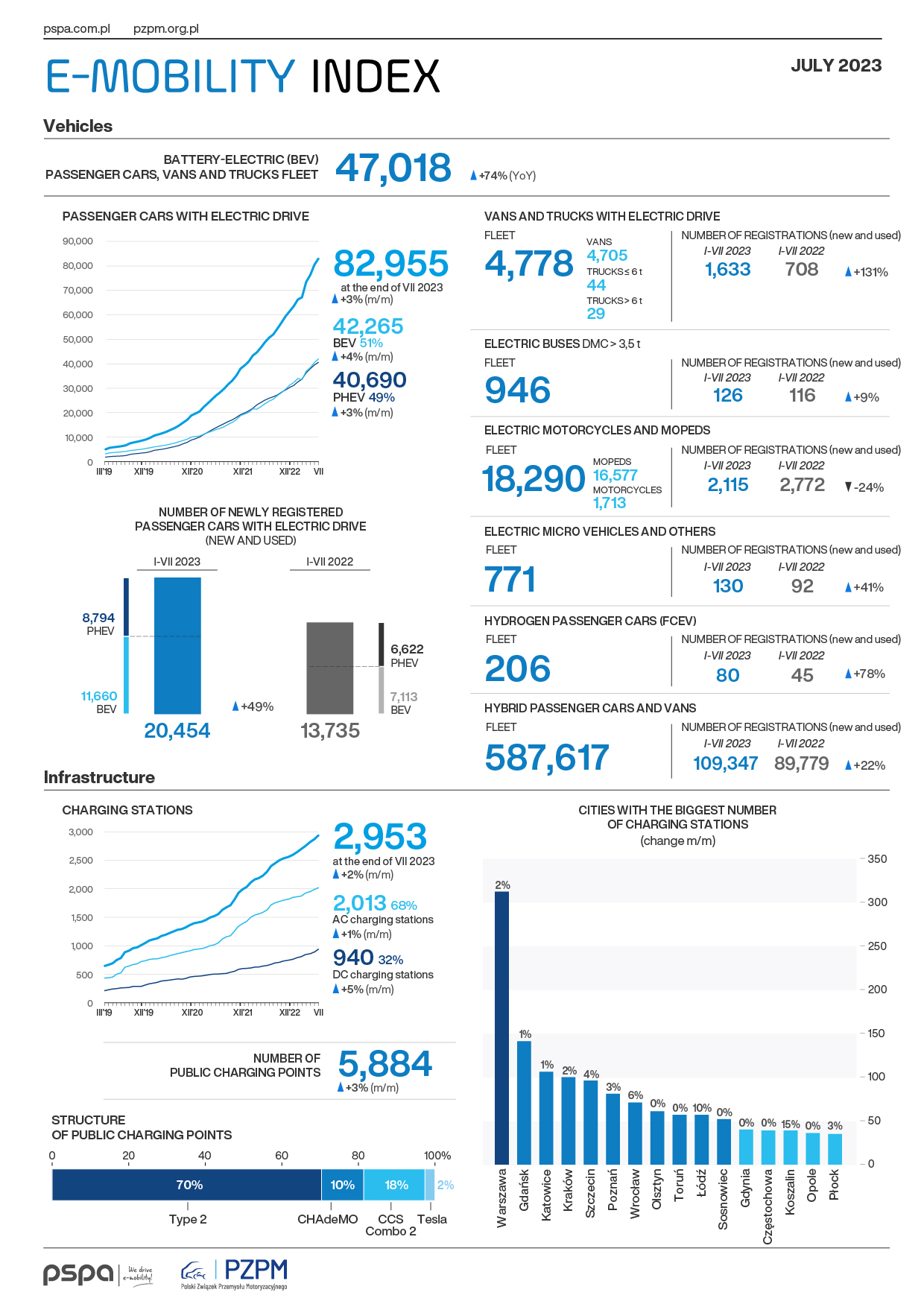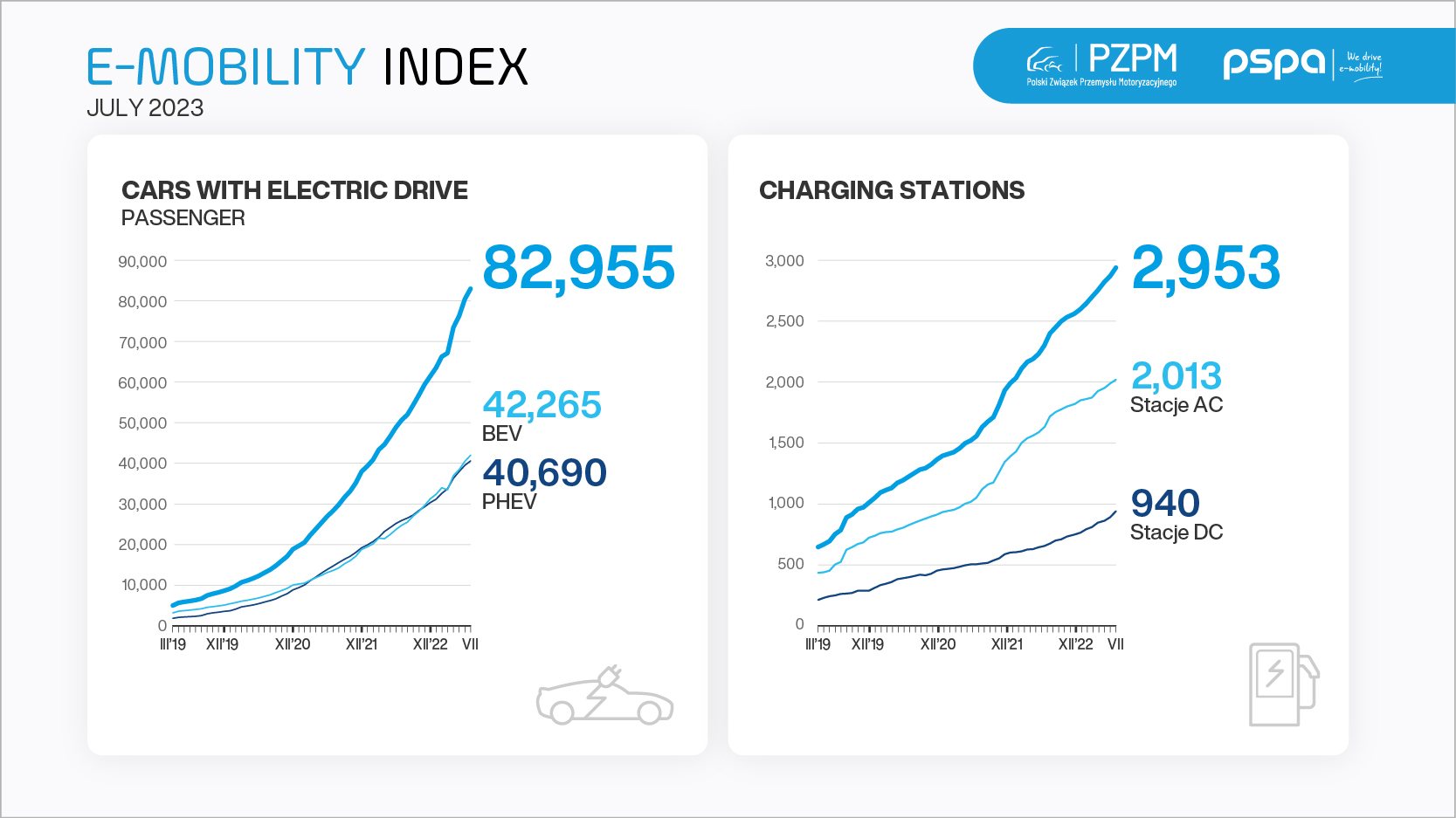According to data from the end of July 2023, a total of 47,018 passenger and commercial total electric vehicles (BEVs) were registered in Poland. For the first seven months of this year, their number increased by 13,293 units, or 57.7% more than in the same period of 2022 – according to the E-mobility Index, launched by PZPM and PSPA.
By the end of July 2023, there were 82,955 electric passenger cars on Polish roads. The fleet of fully electric cars (BEVs, or battery electric vehicles) numbered 42,265, and the fleet of plug-in hybrid electric vehicles (PHEVs, or plug-in hybrid electric vehicles) numbered 40,690. The number of electric vans and trucks was 4,778 units, of which BEVs accounted for more than 99%. The fleet of electric mopeds and motorcycles is also growing steadily, consisting of 18,290 units at the end of July, as well as the number of passenger and commercial hybrid cars, which expanded to 587,617 units. By the end of last month, Poland’s electric bus fleet had grown to 946 units.
Parallel to the fleet of electric vehicles, the charging infrastructure is also developing. At the end of July 2023, Poland had 2953 publicly available electric vehicle charging stations (5884 points). Of these, 32% were direct current (DC) fast charging stations, and 68% were slow alternating current (AC) chargers of 22 kW or less. In July, 68 new public charging stations were launched (175 points).
– After seven months, we observe continued good dynamics in the deployment of new publicly available charging stations despite the ongoing holiday season. In July, 68 chargers were put into use, increasing the total number of publicly available charging points by 32% compared to last year. Much of this is due to the growing charging network at shopping centers, especially in major urban arteries, and the completion of acceptance processes for stations whose construction process began 2-3 years ago. As a result, we expect the expansion of the charging network to approximately 7,500 points by the end of the year, and to over 38,000 points in the next two years. The challenge remains to equalize the pace of charging infrastructure development across the country. Currently, the largest number of chargers for electric vehicles is in Warsaw (312 chargers), Gdansk (141) and Katowice (106), leaving smaller towns behind – mówi Maciej Mazur, Dyrektor Zarządzający PSPA.
– In July, we crossed the mark of 47,000 registered all-electric vehicles. While passenger cars have been growing by roughly 50% year-on-year in recent months, registrations of vans and trucks are almost three times higher. Registrations of hydrogen powered cars increased by almost 80%. These results show that customers are increasingly willing to choose passenger electric vehicles, and companies acquiring vans see this as an opportunity not only to provide environmentally friendly transportation, but also to make measurable savings thanks to the “My Electrician” program – says Jakub Faryś, President of the PZPM.



